November itinerary in Japan Day 5 (Fukuoka Day 3)
(Friday, November 19th)
Table of contents
5. JR Kyushu Headquarters (former Mitsui Bussan Moji Branch)
6. Kitakyushu Bank Moji Branch (former Yokohama Specie Bank Moji Branch)
9. Dalian Friendship Memorial Hall
10. Mojiko Retro Observation Room
11. Old Mitsui O.S.K. Line Building
12. Holme Ringer & Co.Ltd. & Blue Wing Moji
13. NTT Moji Telecommunication History Hall
17. Illuminations at Hakata Station
1. Kashiigu Shrine
On the 5th day of my trip to Nagasaki and Fukuoka, I first went to Kashiigu in the morning. The trains I used are as follows.
Depart Hakata Station at 8:10, JR Kagoshima Line bound for Moji Port, arrive at Kashii Station at 8:22, fare Yen 230
It is about a 15-minute walk from Kashii Station to Kashiigu. There is Kashii Jingu Station on the Kashii Line, and it is about a 5-minute walk from Kashii Jingu Station. The Kashii Line runs about once every 30 minutes.
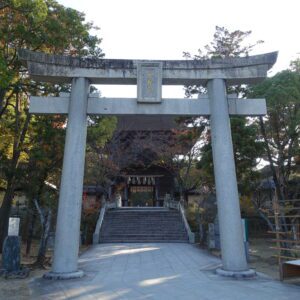
The homepage of Kashiigu says that the origin of Kashiigu is that Empress Jingu built a shrine in 200 AD and worshiped the spirit of Emperor Chuai. The current main shrine was reconstructed in 1801 and is the only architectural style in Japan called “Kashii-zukuri”. The main shrine is a national important cultural property.


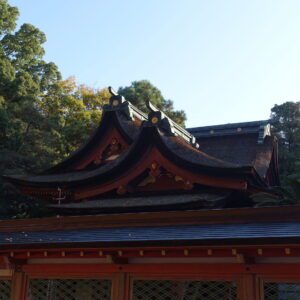
The tower gate is a magnificent gate that was rebuilt in 1903. The atmosphere felt like the gate of a Buddhist temple of Zen Buddhism.

2. Mojiko Station
I headed to Mojiko from Kashiigu. The trains I used are as follows.
Depart Kashii Station at 9:28, JR Limited Express Sonic No. 11 bound for Oita, arrive at Kokura Station at 10:07
Depart Kokura Station at 10:20, JR Kagoshima Main Line bound for Moji Port, arrive at Moji Port at 10:34
Total fare Yen 1,830 (including limited express fare)
The JR Limited Express Sonic No. 11, I got on was “White Sonic”. “White Sonic” is the 885 series of vehicles used for the limited express “Kamome”.

However, the sonic that I imagine is the 883 series of “Blue Sonic” that is operating more. The next photo is “Blue Sonic” that was stopped at Hakata Station. “White Sonic” is a vehicle that uses a lot of curves and has a smart image, and “Blue Sonic” is a vehicle that uses a lot of straight lines and has a rugged image. The unreserved seats were quite crowded and there were few vacant seats.
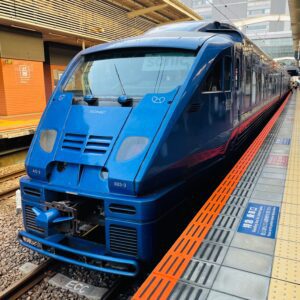
Mojiko Station is a genuine terminal station at the end of the railway line. Among overseas stations, there are many terminal stations in big cities, but in Japan, the larger the city, the fewer genuine terminal stations.
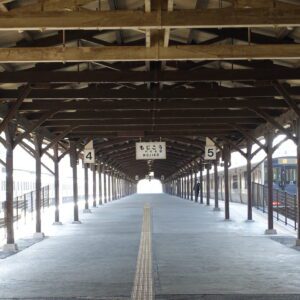
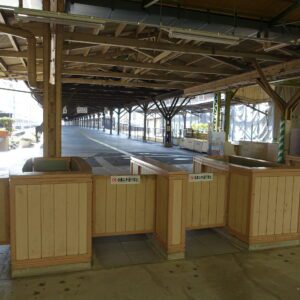
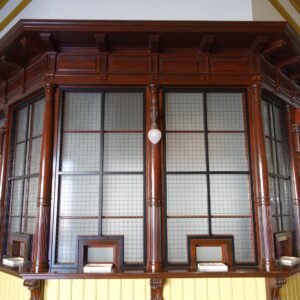
The station building of Mojiko Station is designated as a national important cultural property. This station and Tokyo Station Marunouchi station building are the only station buildings designated as national important cultural properties. The current Mojiko station building was completed in 1914. I think it’s a nice station building no matter how many times I see it.
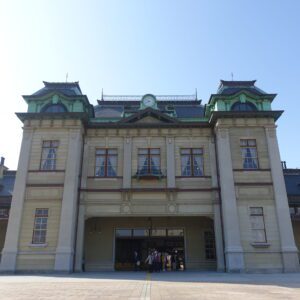
Since the starting point of the classic car rally from November 25th is Mojiko Station (goal is Kobe), classic cars were exhibited in the station building.
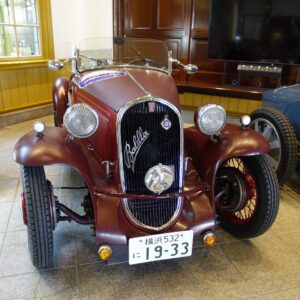
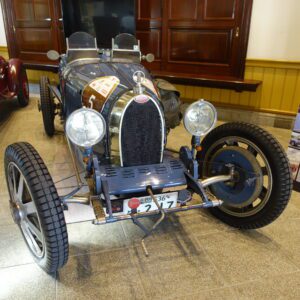
Each tourist attraction of Mojiko opened its grand opening in 1995 as “Mojiko Retro“. The distance between each sightseeing spot is short, and we can go sightseeing on foot. I took a walk around the historic buildings.
3. Moji Yusen Building
The building in front of Mojiko Station is the “Moji Yusen Building”. It was built in 1927. The design was an Art Deco style building with high practicality.
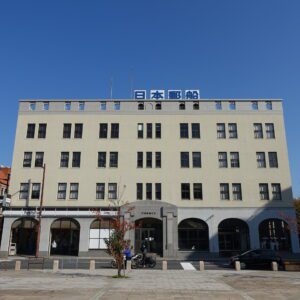
4. Old Moji Mitsui Club
The building next to the Moji Yusen Building is the Old Moji Mitsui Club. It is a customer service facility built by Mitsui & Co., Ltd. Moji Branch in 1921. At the time of construction, it was built in Tanimachi on the mountain side, but in 1990 it was relocated in front of JR Mojiko Station. It is a national important cultural property.
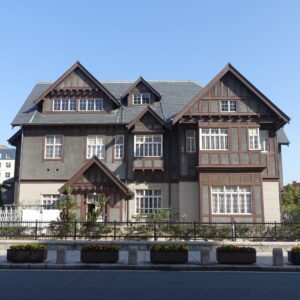
5. JR Kyushu Headquarters (former Mitsui Bussan Moji Branch)
JR Kyushu Headquarters (formerly Mitsui & Co., Ltd. Moji Branch) was built in 1937 as Mitsui & Co.’s third generation Moji Branch. I prefer the side with stairs to the front.

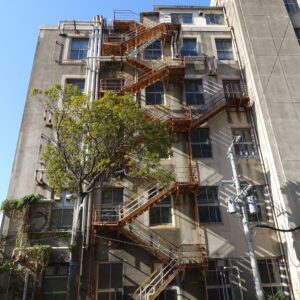
6. Kitakyushu Bank Moji Branch (former Yokohama Specie Bank Moji Branch)
Yokohama Specie Bank was a special bank that specialized in handling foreign exchange. Moji also has a branch office of the Bank of Japan, which suggests that it was the financial center of western Japan. It is currently used as the Kitakyushu Bank Moji Branch.
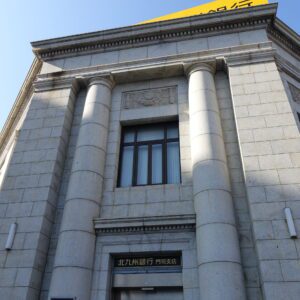
7. Sakaemachi Shopping Arcade
Sakaemachi Shopping Arcade is a shopping street with a total length of about 300m. It is a shopping district for local residents rather than for tourists. It has a retro feel and is a perfect shopping street to take a walk while looking into the shops. However, unfortunately, many stores were closed, like the majority of shopping streets in Japan.
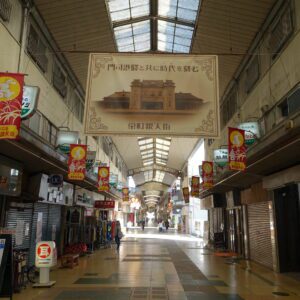
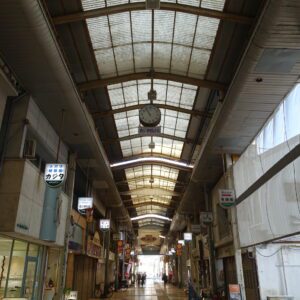
8. Old Moji Customs Building
Old Moji Customs Building was built in 1912 as the second generation of the Moji Customs, which was destroyed by fire. The predecessor Moji Nagasaki Customs Branch was established in 1885. Asako Hirooka, the heroine of the NHK morning drama “Asa ga Kita”, was instrumental in setting up this customs branch office. Asako Hirooka aimed to export coal from Mojiko, which is closer to the port, instead of Nagasaki, which is far from the company’s coal mine in Chikuho.
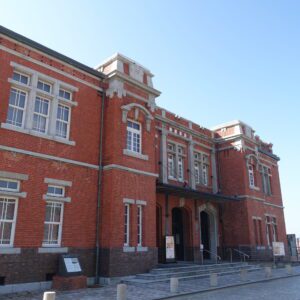
9. Dalian Friendship Memorial Hall
In 1979, Kitakyushu City and Dalian City formed a friendship city. The Dalian Friendship Memorial Hall was built by replicating the building of the railway steamship company built in Dalian in 1902 by the Russian Empire to commemorate the 15th anniversary of the signing of the Friendship City.

10. Mojiko Retro Observation Room
The Mojiko Retro Observation Room is located on the 31st floor of the high-rise condominium “Retro High Mart” designed by Kisho Kurokawa, one of Japan’s leading architects. The observation room is 103m high, and we can see the Kanmon Strait and Kanmon Bridge beautifully. The Kanmon Bridge is a suspension bridge with a length of 1,068 meters. The sea at the foot of the pier on the Shimonoseki side of the Kanmon Bridge was the stage of the Battle of Dannoura (1185) in the Genpei War.
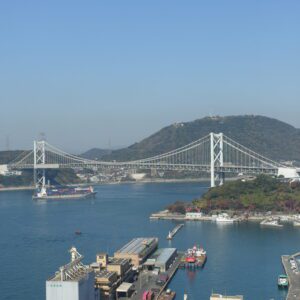

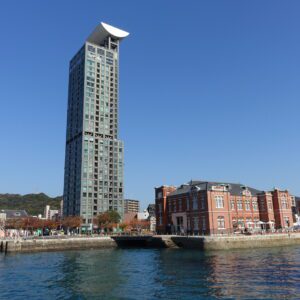
We can drink craft beer “MOJIKO BEER” at Mojiko Retro Observation Room. It was great to drink craft beer while looking at the Kanmon Strait. The “MOJIKO BEER” Weizen I drank won the highest award of the National Craft Beer Quality Examination Committee twice. It was a delicious beer.
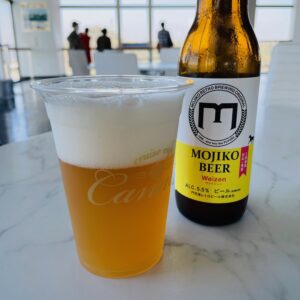
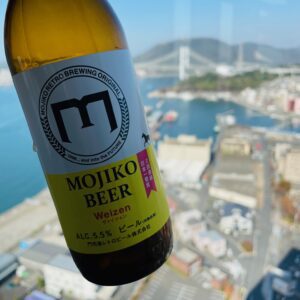
Admission: Adults Yen 300, elementary and junior high school students Yen 150
11. Old Mitsui O.S.K. Line Building
Old Mitsui O.S.K. Line Building was built in 1917 as the Moji branch of Osaka Shosen. It features an octagonal tower at the corner of the building. It is registered as a national tangible cultural property. On the 2nd floor of Old Mitsui O.S.K. Line Building, there is a gallery of Seizo Watase from Kitakyushu City, Fukuoka Prefecture.
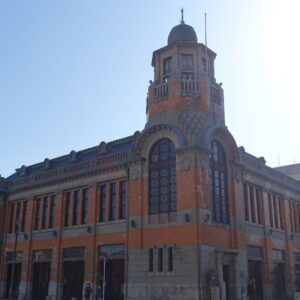
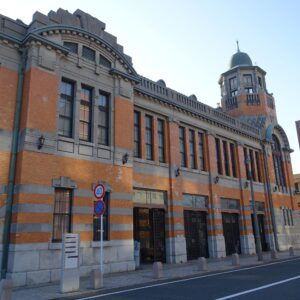
12. Holme Ringer & Co.Ltd. & Blue Wing Moji
Holme Ringer & Co.Ltd. building was built in 1962. The predecessor company was the Holme Ringer & Co.Ltd., which was founded by British trader Frederick Ringer in 1868, the last year of the Edo period, together with Edward Zohrab Holme.
Frederick Ringer played a leading role in Nagasaki after Thomas Glover and contributed to the development of Nagasaki’s trade and industry. Former Ringer house, built in 1868, is a national important cultural property. It is currently preserved in Glover Garden in Nagasaki City. The ringer of Nagasaki Champon’s “Ringer Hut” is named after Frederick Ringer.
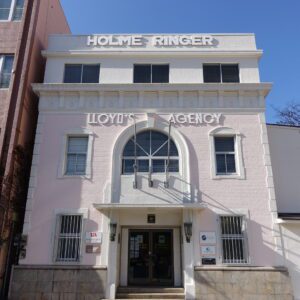
Holme Ringer & Co.Ltd. building was more American than English, and I was particularly impressed with the West Coast buildings. The light pink color may make me feel that way. Standing in the immediate vicinity of Old Mitsui O.S.K. Line Building, which has an impressive red brick color, the light pink color of Holme Ringer & Co.Ltd. building is even more noticeable. It is a building that left an impression in Mojiko Retro.
There is “Blue Wing Moji” in the immediate vicinity of Holme Ringer & Co.Ltd.. It is a drawbridge exclusively for pedestrians. It jumps up to a 60 degree angle once an hour. It is a pleasant place where you can see the Kanmon Bridge.

13. NTT Moji Telecommunication History Hall
NTT Moji Telecommunication History Hall was built in 1924 as the Moji Post Office Telephone Division, Ministry of Communications. It was the first reinforced concrete building in Moji. Looking across the intersection, it looks like a beautiful building with curved surfaces. However, if I shoot only the straight part, will I be the only one who looks like a building in a dystopian movie?
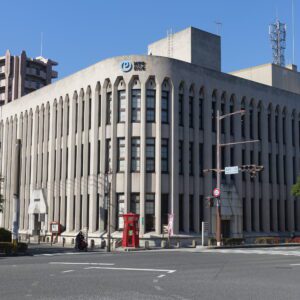
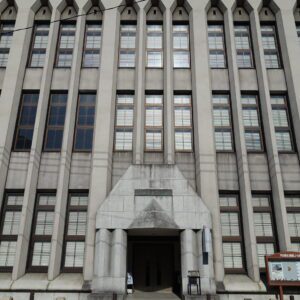
14. Sankiro
Sankiro is a three-story wooden former restaurant built in 1931. In the past, it prospered as one of the top three restaurants in Mojiko. Many celebrities such as Sazo Idemitsu, the founder of Idemitsu Kosan, and Kyoshi Takahama, a poet, visited. It was also open as Sankiro Tea House on the first floor, but due to the influence of COVID-19, it is closed from August 11, 2021 to March 31, 2022.

You can visit the inside for free. I learned from the volunteers who gave me very polite explanations. The columns and windows of all different designs were wonderful. There is also a “progress stairway” where people who go up are said to be successful, and a telephone room and telephone that were used at that time. I strongly recommend that you take a tour of the interior of Sankiro.
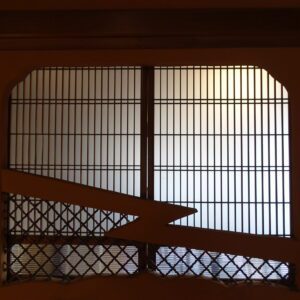
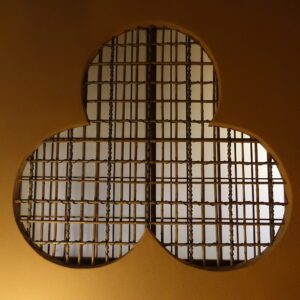

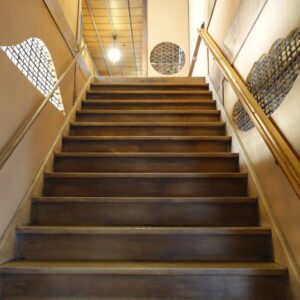
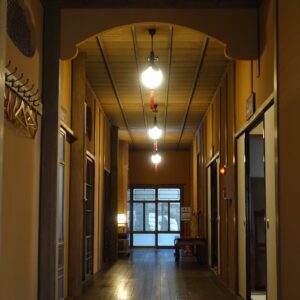

15. Kiyotaki neighborhood
The “Kiyotaki area” near Sankiro has a narrow alley and is ideal for a walk. There are still wooden houses and brick houses, making it a quaint townscape. However, since it is a very small area, you can go around in about 10 minutes.
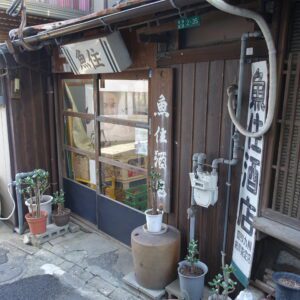

16. Iwata family housing
The Iwata family has been selling alcoholic beverages in the Mojiko area since 1899. The existing building was relocated and rebuilt in 1922 as a store (liquor store) and a residence. It is designated as a tangible cultural property of Kitakyushu City.
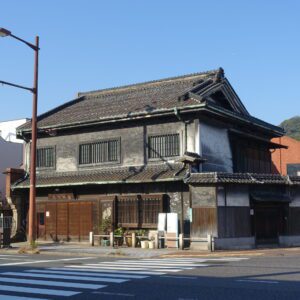
17. Illuminations at Hakata Station
I returned to Hakata station from Mojiko station and had dinner. The trains I used are as follows.
Depart Mojiko Station at 15:41, JR Kagoshima Line rapid train bound for Omuta, arrive at Kokura Station at 15:54
Depart Kokura Station at 16:15, JR Shinkansen Nozomi No. 29 bound for Hakata, arrive at Hakata Station at 16:30
Total fare: Yen 2,370 (including limited express fare)
After dinner, the illuminations at Hakata Station were beautiful. Because it was a weekend (Friday), there were many people.
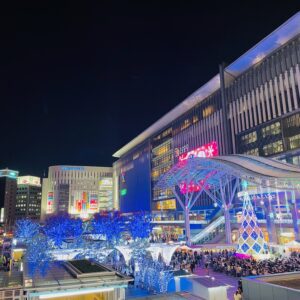

Note: The departure / arrival times, fares, admission fees, meal fees, etc. of the transportation facilities listed in the text are as of the time of writing the BLOG. They may change in the future, so Please verify yourself when you go on a trip.
